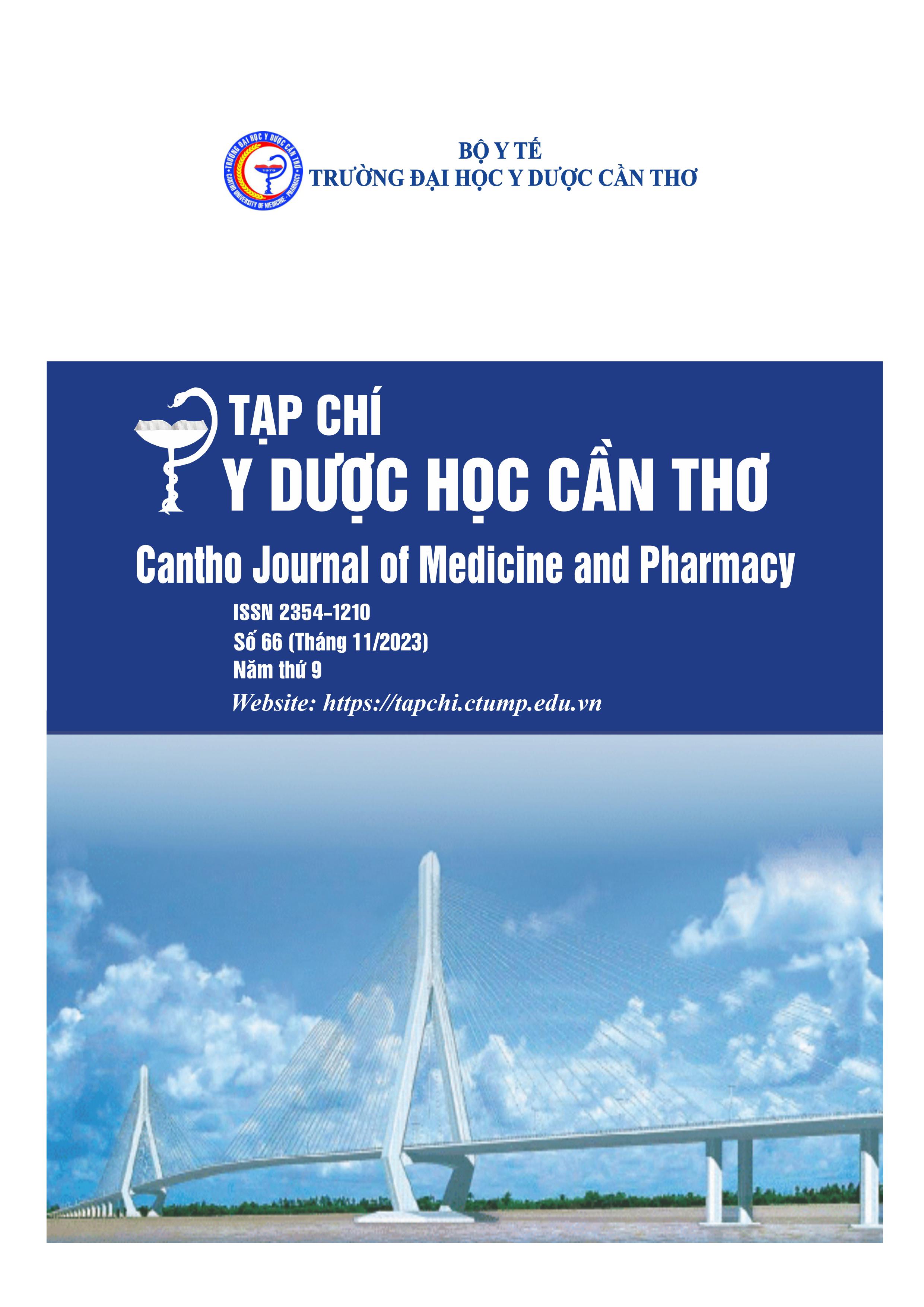RESEARCH CHARACTERISTICS AND VALUE OF COMPUTER TOMOGRAPHY IMAGES IN DIAGNOSIS CHOLEDOCHOLITHIASIS AT CAN THO GENERAL HOSPITAL 2021-2023
Main Article Content
Abstract
Background: Primary bile duct stones are a common surgical disease in Viet Nam. Computer tomography can be used to evaluate biliary lithiasis, helping to choose a reasonable treatment and monitoring strategy. Objectives: Describe computer tomography characteristics of biliary lithiasis and determine the value of computer tomography in diagnosing hepatic main biliary stones. Materials and methods: A cross-sectional descriptive study was conducted on 132 patients at Can Tho General Hospital who were suspected of having bile duct lithiasis based on clinical symptoms were examined with computed tomography scan with contrast. The presence or absence of biliary lithiasis was confirmed on the basis of findings at surgery and/or intraoperative cholangiography or endoscopic retrograde cholangiography. Results: Patients over 60 years old accounted for the majority (62.1%), the female: male ratio was 1.36:1, history of treatment for biliary stones was 40.9%. Among the main hepatic biliary stones according to computer tomography results, choledocholithiasis with high proportion. The main hepatic biliary stone dimension, is mostly ≥ 10 mm, most attenuation 50-149 HU. Sensitivity, and specificity in the main hepatic biliary stone diagnosis through computer tomography ≥ 80%. Conclusions: Computed tomography has a high value in the diagnosis of hepatic main biliary stones.
Article Details
Keywords
Hepatic main biliary stones, computer tomography, choledocholithiasis
References
2. Anderson SW, Lucey BC, Varghese JC, Soto JA. Accuracy of MDCT in the diagnosis of choledocholithiasis. AJR Am J Roentgenol. 2006 Jul;187(1):174-80. doi: 10.2214/AJR.05.0459. PMID: 16794173.
3. Chung WS, Park MS, Yoon SW, Yu JS, Kim KW. Diagnostic accuracy of multidetector-row computed tomography for common bile duct calculi: is it necessary to add non-contrastenhanced images to contrast-enhanced images?. J Comput Assist Tomogr. 2007 JulAug;31(4):508-12. doi: 10.1097/01.rct.0000250104.55305.90. PMID: 17882023.
4. Nguyễn Hoàng Phong. Vai trò chụp cắt lớp điện toán xoắn ốc trong sỏi mật. Đại học Y dược Thành phố Hồ Chí Minh. 2006. 79-86.
5. Trần Cảnh Đức. Giá trị của Xquang cắt lớp điện toán trong chẩn đoán sỏi đường mật chính ngoài gan. Đại học Y dược Thành phố Hồ Chí Minh. 2012. 81-105.
6. Kim HJ, Park DI, Park JH. Multidetector computed tomography cholangiography with multiplanar reformation for the assessment of patient with biliary obstruction. J Gastroenterol Hepatol, 22(3), pp, 400‐405.
7. Okada M, Fukada J, Toya K, Ito R, Ohashi T, Yorozu A. The value of drip infusion cholangiography using multidetector-row helical CT in patients with choledocholithiasis. Eur Radiol. 2005 Oct;15(10):2140-5. doi: 10.1007/s00330-005-2820-z. Epub 2005 Jun 21. PMID: 15968515.
8. Nguyễn Văn Chung. Nghiên cứu đặc điểm dịch tễ học bệnh sỏi mật ở người Tày trưởng thành tại hai huyện Định Hóa, Võ Nhai tỉnh Thái Nguyên và hiệu quả một số phương pháp can thiệp. Trường Đại học Y dược Thái Nguyên. 2017. 97-100.
9. La Văn Phú. Nghiên cứu ứng dụng phẫu thuật nội soi kết hợp nội soi đường mật trong mổ điều trị sỏi đường mật chính ở bệnh nhân cao tuổi. Trường Đại học Y dược Cần Thơ. 2022. 93-101. 10. Phạm Thị Xuân Trinh. Nghiên cứu đặc điểm hình ảnh cắt lớp vi tính và hình ảnh chụp mật tụy ngược dòng qua nội soi trong chẩn đoán sỏi đường mật chính. Đại học Y dược – Đại học Huế. 2019. 46-52.
11. Nguyễn Đình Hối và Nguyễn Mậu Anh. Sỏi đường mật. Nhà xuất bản Y học - Thành phố Hồ Chí Minh. 2012. 389-413.
12. Lorio E, Patel P, Rosenkranz L, Patel S, Sayana H. Management of Hepatolithiasis: Review of the Literature. Curr Gastroenterol Rep. 2020 May 7;22(6):30. doi: 10.1007/s11894-020-007653. PMID: 32383039.
13. Sử Quốc Khởi. Nghiên cứu ứng dụng phẫu thuật nội soi mở ống mật chủ lấy sỏi điều trị sỏi đường mật chính tại Bệnh viện Đa Khoa Kiên Giang. Học viện Quân Y. 2019. 84-86.


